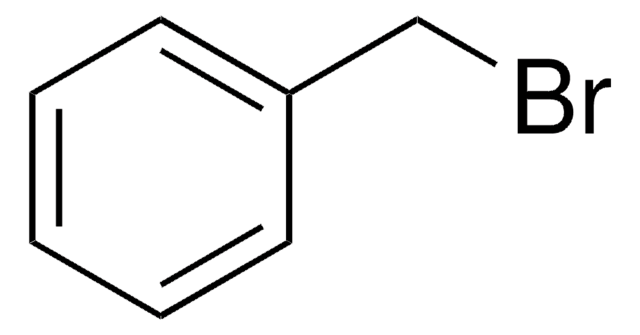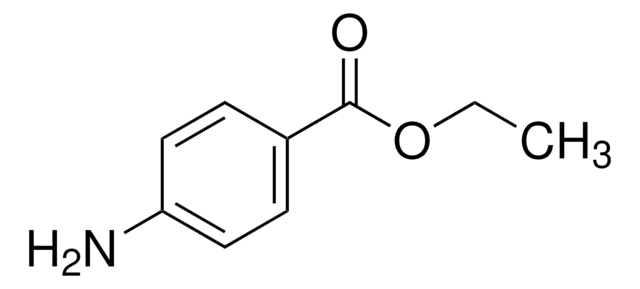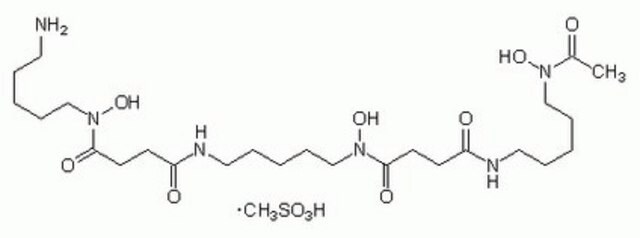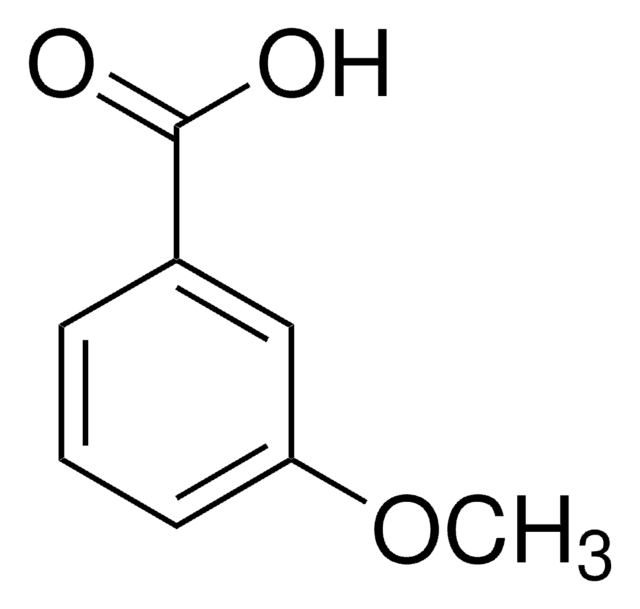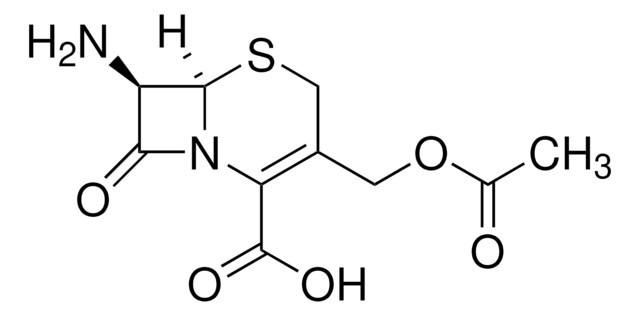F4004
β-Fluoropyruvic acid sodium salt monohydrate
≥98%
Synonym(s):
sodium 3-fluoro-2-oxopropanoate hydrate
Sign Into View Organizational & Contract Pricing
All Photos(3)
About This Item
Linear Formula:
FCH2COCO2Na · H2O
CAS Number:
Molecular Weight:
146.05
MDL number:
UNSPSC Code:
12352106
PubChem Substance ID:
NACRES:
NA.25
Recommended Products
Quality Level
Assay
≥98%
storage temp.
−20°C
SMILES string
FCC(C([O-])=O)=O.O.[Na+]
InChI
1S/C3H3FO3.Na.H2O/c4-1-2(5)3(6)7;;/h1H2,(H,6,7);;1H2/q;+1;/p-1
InChI key
HDSZBLZMLDQKRW-UHFFFAOYSA-M
Storage Class Code
11 - Combustible Solids
WGK
WGK 3
Flash Point(F)
Not applicable
Flash Point(C)
Not applicable
Choose from one of the most recent versions:
Already Own This Product?
Find documentation for the products that you have recently purchased in the Document Library.
R R Taylor et al.
FEMS microbiology letters, 115(2-3), 163-167 (1994-01-15)
In contrast to previously studied non-fermentative arginine-hydrolysing (F-/A+) Mycoplasma species, M. gallinarum cells suspended in a salts solution oxidised ethanol and L-lactic, pyruvic and 2-oxobutyric acids. The organic acids were additionally shown effectively to replace arginine as energy sources in
Cody W van Dijk et al.
The journal of physical chemistry. A, 116(16), 4082-4088 (2012-03-27)
The ground state rotational spectra of 2-fluoropyridine and 3-fluoropyridine have been investigated using both Fourier transform microwave (FTMW) and chirped pulse Fourier transform microwave (cp-FTMW) spectroscopies. In addition to the parent species, the spectra of the (13)C and (15)N singly
P Urban et al.
European journal of biochemistry, 144(2), 345-351 (1984-10-15)
It has been shown that reduced flavocytochrome b2 not only catalyzes reduction of bromopyruvate [P. Urban, P.M. Alliel and F. Lederer (1983) Eur. J. Biochem. 134, 275-281] but also transforms it into pyruvate in a reductive elimination process. The dehydrohalogenation
Fluoropyruvate: a potent inhibitor of the bacterial and the mammalian pyruvate dehydrogenase complex.
H Bisswanger
Biochemical and biophysical research communications, 95(2), 513-519 (1980-07-31)
E B Borthwick et al.
The Biochemical journal, 305 ( Pt 2), 521-524 (1995-01-15)
Simplified procedures for assaying and purifying dihydrodipicolinate synthase (EC 4.2.1.52), the first enzyme of the lysine biosynthetic pathway, have been developed and electrospray ionization m.s. has been used to observe the imine intermediate with pyruvate and to investigate the reaction
Our team of scientists has experience in all areas of research including Life Science, Material Science, Chemical Synthesis, Chromatography, Analytical and many others.
Contact Technical Service

